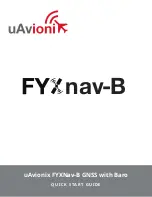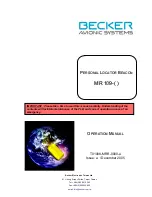
AV8OR User’s Guide
Aviation Mode Operation
Weather Function
Pub. No D200803000008 Page 3-114 Rev 3 Apr 2009
© Honeywell International Inc. Do not copy without express permission of
Honeywell.
•
Weather conditions (may not always be present)
•
Temperature (may not always be present)
•
Wind direction and speed (may not always be present)
•
Turbulence (may not always be present)
•
Icing (may not always be present)
•
Remarks (may not always be present)
Text AIRMETs (USA only)
Tap on the
CHOOSE PRODUCT
soft key on the Weather Main page
and select Text AIRMETs from the SELECT WX PRODUCT box.
Figure 3-150: Text AIRMETs
An AIRMET is an advisory of significant weather that could be
hazardous to single engine, light aircraft and VFR pilots. However,
parameters are such that the phenomena do not require issuance of
a SIGMET. AIRMETs address details regarding IFR, extensive
mountain obscuration, turbulence, strong surface winds, icing and
freezing levels. AIRMETs are considered widespread because they
must either be affecting or forecast to affect an area at least 3,000
square miles. However, during the forecast period, the actual
affected area may be much smaller. AIRMETs are issued every six
hours and the maximum forecast period is 6 hours.
An AIRMET contains elements in the following order:
•
Forecast Area
•
Report Type
•
Date and time issued
•
Report designation and reason for issuance
•
Validity period
















































